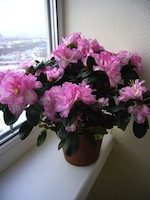- Mother’s Day Recipes You Can Make with Flowers - May 9, 2019
- Celebrating Flowers and Culture at the Shinnyo-en Lantern Floating Ceremony - March 29, 2018
- Give Easter Lilies This Spring - March 22, 2018
The Language of Flowers, known as floriography, has a history much like any language with influences from its diverse background of speakers. The ability to convey messages through the scent, sight and gift of flowers has a tradition that has risen and fallen with empires and traveled from old world to new, picking up new meanings and losing some in translation along the way.
While many associate the use of symbolism to convey clandestine messages through flowers arising from the Victorian era in England, the actual origin most likely dates far back into the Ottoman Empire. In her book, The Language of Flowers: a History, professor Beverly Seaton credits the wife of a British ambassador to Turkey who described what then was known as the custom of selam she observed while living there during the early part of the 18th century. This Englishwoman, Lady Mary Wortley Montagu (1689-1764) was a keen observer and avid writer whose letters from Istanbul described Eastern life to those back in Europe, particularly the lives of Muslim women. She noted how flowers were often used as a form of cryptological communication between women of the harem and how this practice of selam had also been popular in the court of Constantinople where communication between the sexes or persons from different social groups must often be conducted discretely.
She wrote about the different meanings associated with each plant and flower in her long letters, which were eventually published back in England and France where interest grew along with the importation of tulips and a growing interest in botany among the upper class. By 1820, the interest had grown wide enough to spawn several books about the subject, including the publication of a dictionary that described the meaning attributed to each flower by the woman Louis Cortambert under the pen name Madame Charlotte de la Tour. Reaching its zenith in France during the mid 1800’s, floriography made its way across the ocean to America, where the discovery of local flora growing in the New World were added to the vocabulary of flowers. Adding to this interest were several articles written about the secret language of flowers in popular women’s magazines at the time, which were widely read and distributed.
As the practice of communicating with flowers spread from east to west, it gained not only new plants and new “speakers”, but also new meanings within cultural context. For example, while the spring-flowering narcissus is considered in Eastern culture to convey good fortune and happiness, it has come to represent egotism in Western cultures.
Culturally, flowers are ripe with symbolism and can be found in modern myths, art, literature and at your local flower shop. Why not learn a new language and improve your vocabulary by taking some home today?



